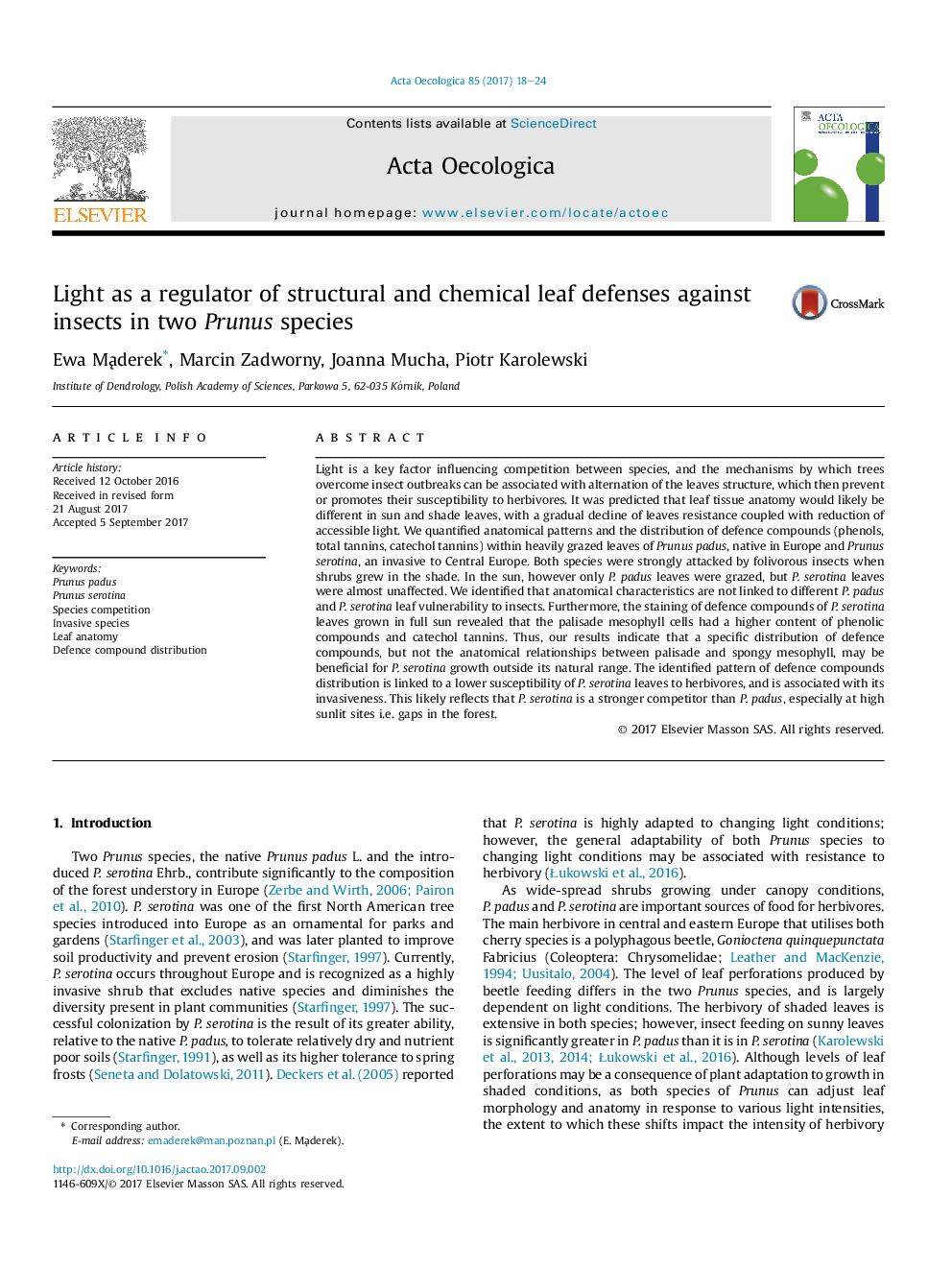| Article ID | Journal | Published Year | Pages | File Type |
|---|---|---|---|---|
| 5742444 | Acta Oecologica | 2017 | 7 Pages |
â¢Light conditions determine the contrasting pattern of leaf grazing between the two Prunus species.â¢In full sun, the palisade mesophyll cells of P. serotina leaves showed a higher staining of phenols and catechol tannins.â¢The contribution of anatomy to lower grazing of P. serotina sun leaves is ambiguous.â¢Localization of defence compounds is associated with lower grazing of P. serotina leaves by insect folivores.
Light is a key factor influencing competition between species, and the mechanisms by which trees overcome insect outbreaks can be associated with alternation of the leaves structure, which then prevent or promotes their susceptibility to herbivores. It was predicted that leaf tissue anatomy would likely be different in sun and shade leaves, with a gradual decline of leaves resistance coupled with reduction of accessible light. We quantified anatomical patterns and the distribution of defence compounds (phenols, total tannins, catechol tannins) within heavily grazed leaves of Prunus padus, native in Europe and Prunus serotina, an invasive to Central Europe. Both species were strongly attacked by folivorous insects when shrubs grew in the shade. In the sun, however only P. padus leaves were grazed, but P. serotina leaves were almost unaffected. We identified that anatomical characteristics are not linked to different P. padus and P. serotina leaf vulnerability to insects. Furthermore, the staining of defence compounds of P. serotina leaves grown in full sun revealed that the palisade mesophyll cells had a higher content of phenolic compounds and catechol tannins. Thus, our results indicate that a specific distribution of defence compounds, but not the anatomical relationships between palisade and spongy mesophyll, may be beneficial for P. serotina growth outside its natural range. The identified pattern of defence compounds distribution is linked to a lower susceptibility of P. serotina leaves to herbivores, and is associated with its invasiveness. This likely reflects that P. serotina is a stronger competitor than P. padus, especially at high sunlit sites i.e. gaps in the forest.
